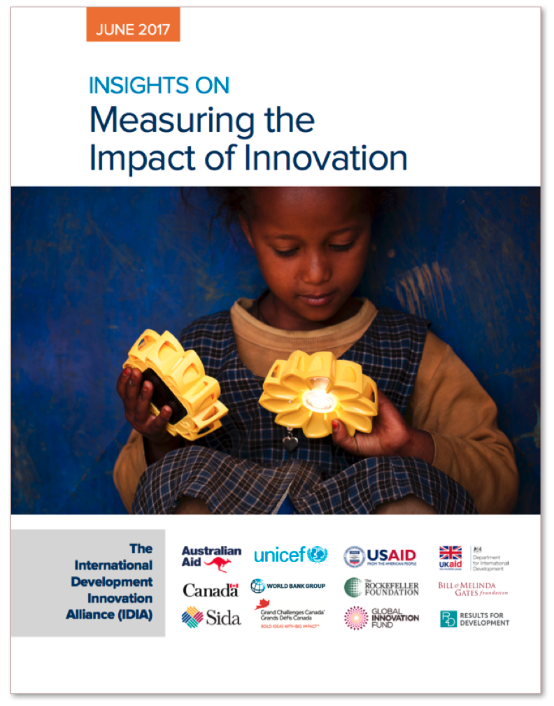Measuring the Impact of Innovation
JUNE 2017
This paper in the IDIA Insights series focuses on various challenges and lessons learned of funders seeking to measure the impact of development innovations they support. It draws on the experience and learning of a wide range of bilateral, multilateral, philanthropic and civil society actors who came together in a Working Group on Measuring Impact facilitated by the International Development Innovation Alliance (IDIA). While it does not represent the formal strategy or approach of any one single agency in the Working Group or IDIA itself, it does reflect areas of overlapping interest and terminology that can be used as a point of reference for interested stakeholders in reflecting on, and enhancing, their own approaches to measuring the impact of development innovations.
Tools and approaches to measuring impact continue to emerge and evolve at a rapid pace. The insights contained herein will therefore benefit from regular review and iteration to accurately capture continuing advances in knowledge and practice. In its current form, this document provides a broad architecture of impact domains and indicator sets intended to help funders in measure and predict the outcomes of the innovations they support. The insights collected in this paper are also likely to be valuable in helping innovators themselves and other partner organisations develop their own impact measurement approaches, thereby acting as a potential catalyst for deeper and more productive partnerships.
This paper provides a broad architecture to help guide funders in navigating the long and complex process of impact measurement, while also offering guidance to help innovators and partner organisations develop/enhance their own impact measurement approaches. It presents a high-level architecture for measuring the impact of innovation that is built around a minimal set of ‘core’ indicators, with ‘lives saved and improved’ being the ultimate measures of success. These indicators are organised in terms of three key impact domains: (1) ‘Impact on Beneficiaries’, ‘Scale’ and ‘Sustainability’, with additional guidance on what to measure when assessing the potential impact of an innovation (the ‘Leading’ Indicators) and what to measure when assessing the actual, achieved impact (the ‘Outcome’ Indicators).
The Executive Summary of this report is also available to download below in Arabic, courtesy of our colleagues at SABR.

